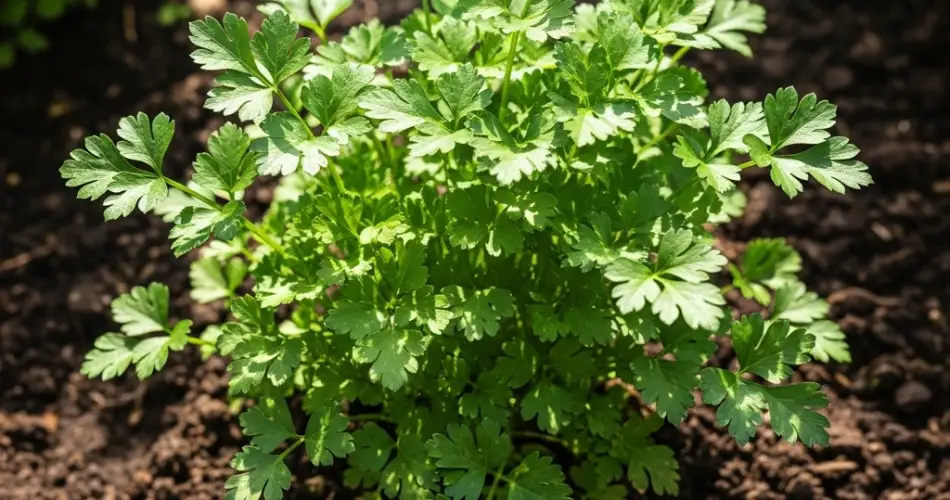Parsley is one of the most commonly used herbs in the kitchen, yet many people overlook just how easy it is to grow it at home—even from kitchen scraps. Whether you’re looking to reduce waste, save money, or simply enjoy a fresh supply of parsley on your windowsill or in your garden, regrowing it from leftover stems is both rewarding and remarkably simple.
With the right technique and a little patience, even beginner gardeners can cultivate lush, fragrant parsley without needing seeds or a trip to the garden center.
Why Regrow Parsley from Kitchen Scraps?
Regrowing parsley from scraps is not only budget-friendly, it’s also eco-friendly. Instead of tossing parsley stems into the compost or trash, you can turn them into new, healthy plants. This method reduces food waste and gives you a constant supply of fresh parsley for cooking, garnishing, or making tea.
Regrowth is also an ideal project for small spaces. You don’t need a large garden or a fancy setup—just a sunny windowsill, a few containers, and a glass of water to get started.
What You Need to Get Started
Before you begin, collect a few fresh parsley stems with leaves trimmed off. You’ll also need:
-
A small glass or jar
-
Fresh water
-
A sunny window ledge
-
Potting mix
-
A small pot with drainage holes (if planting later)
Make sure the parsley stems are at least 7–10 cm (3–4 inches) long and have a few healthy-looking leaf nodes.
Step-by-Step: How to Regrow Parsley from Scraps
1. Select the Right Stems
After using parsley leaves for cooking, save the lower part of the stem that includes at least one or two leaf nodes. These are the small bumps or joints where leaves grow and where new roots are likely to sprout.
2. Place in Water
Fill a small glass or jar with room-temperature water and insert the parsley stems so that the bottom inch is submerged. Make sure the leaf nodes are just underwater, as this is where the roots will begin to grow.
3. Provide Sunlight
Place the jar on a warm, sunny windowsill where it gets at least 6 hours of sunlight per day. Natural light is best, but if you’re limited, a grow light can help encourage root formation.
4. Change Water Regularly
Every two days, replace the water to keep it fresh and prevent mold or bacterial buildup. You may notice small white roots starting to form within a week.
5. Transplant to Soil
Once the roots are about 2–3 cm (1 inch) long, your parsley is ready to move into soil. Use a pot with good drainage and fill it with light, well-aerated potting mix.
Plant the rooted stems gently in the soil, burying the lower part while keeping the green stem above the surface. Water thoroughly after planting.
Caring for Your Potted Parsley
After transplanting, parsley needs some basic care to thrive:
-
Sunlight: Parsley prefers full sun, so keep your pot near a bright window or outdoors in a sunny spot.
-
Watering: Keep the soil moist but not soggy. Water when the top inch of soil feels dry.
-
Fertilizer: Every 3–4 weeks, feed the plant with a diluted all-purpose liquid fertilizer to encourage leafy growth.
-
Pruning: Regularly snip outer leaves from the base to encourage new growth in the center. Avoid cutting all leaves at once.
With minimal care, your parsley plant will produce for several months, giving you a steady supply of fresh, homegrown herbs.
Regrowing Parsley in Water Long-Term (Optional)
While transplanting to soil is best for long-term health, parsley can survive for several weeks in water alone. Keep the water fresh, change it every few days, and trim off any yellowing leaves. This method is especially handy for those without access to potting soil or gardening space.
However, note that parsley in water may not grow as robustly or live as long as soil-grown plants.
Troubleshooting Common Issues
-
Wilting after transplanting: This is common. Keep the soil moist and avoid full sun for the first few days to help the plant adjust.
-
Yellow leaves: Often a sign of overwatering or lack of nutrients. Ensure good drainage and feed occasionally.
-
No root growth in water: Make sure the water stays clean and the stems are healthy. Try warmer locations and ensure the stem hasn’t dried out.
Final Thoughts
Growing parsley from kitchen scraps is one of the simplest ways to enjoy fresh herbs without any special equipment or gardening expertise. With a glass of water, a bit of sunshine, and a little time, you can turn what would have been waste into a productive and attractive plant.
It’s a rewarding way to get started with gardening, reduce food waste, and always have a flavorful ingredient at hand. Even if you’ve never had success with plants before, parsley offers a forgiving and fruitful beginning.



